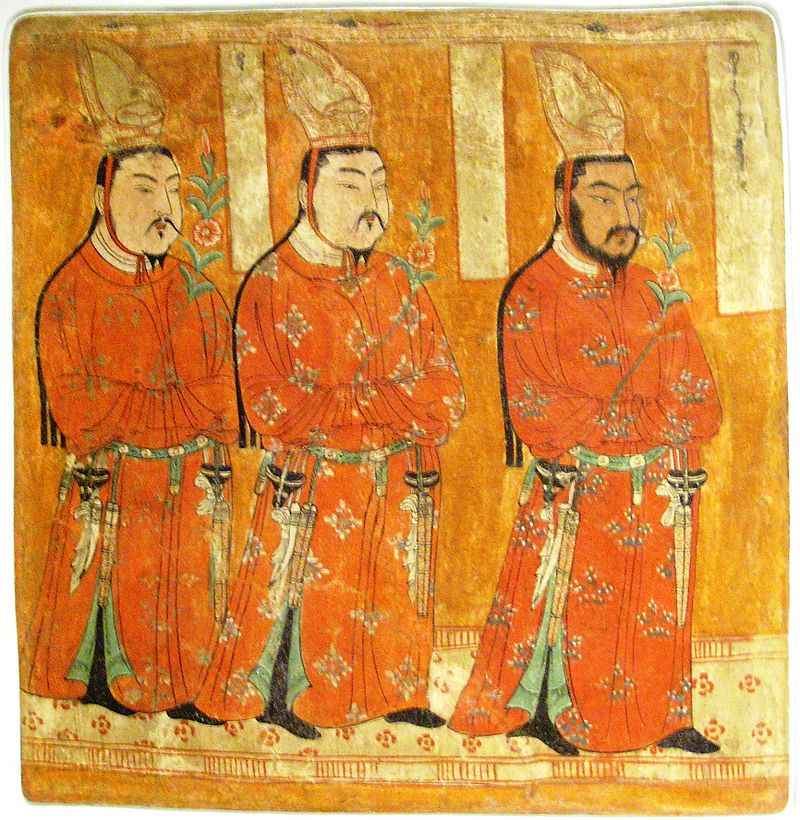In Greek Hephthalite, in Indian Huna, There are always discussions on their origin, but some scholars believe they are related to Xiongnu. The core group of White Xiongnu was warrior nomads, but most White Xiongnu were farmers. The earliest reference about them is from 125 CE, which says that they lived in the desert of Dzungaria. In 425 they conquered Sogdian Horasan. Since then Iran was recurrently attacked and taxed. In 503-513 they were pushed out of Iran and were defeated by Hosrou I in 557. White Xiongnu attacked India and conquered Ganga River valley, but in 528 they were thrown out. They had some influence on Indian society, shaking the cast system. It is believed that some White Xiongnu remained in India.
Wood Processing Art
During the period of Uchjulu Chanyu (8 BCE – 13 CE) Han court asked to take a small parcel of Xiongnu land where there are mountains and forest but Xiongnu refused to give it and explained that “we make ger and cart by wood, so we can not give this land”. Also, there’s information that they used to make a bow by wood from this mountain and Yingshan Mountain which is located on the north side of this mountain. Even though there is not any other direct information about the art of wood processing and carpentry in the source wooden parts of the tomb, coffin, and some woodworks show that carpentry was quite well developed in the Xiongnu period.
It is clear that they used to use saw. Metal saw were found from the tomb of Duulga Uul and the tomb of Khudgyin Tolgoi tomb. Saw mark is observed clearly from wooden burials of Noyon Uul tomb. It shows that saw and carpenters plane is used very broadly. They used to twist the rope which is tied in bow fast for making fire so there’s adequate reason to consider that they had a drill. All wooden parts for building a house was prepared and cut by an axe in Ivolga settlement and metal axe and chisel which are considered as rare findings were found from this settlement.
Pine was used broadly among the Xiongnu. Pine is not only used for making the big tombs of the elite, it is also used for making tombs of common people. Saddle and dishes also were made of pine. Cart-wheel used to be made of elm which is a more flexible tree and other parts of the cart were used to be made of a birch tree. A small table made of birch was found from Noyon UUl tomb.
Wool and Felt Processing
One of the main products of nomadic animal husbandry is the wool. Felt and other products made by wool are important to the daily life of nomads. We can’t imagine nomads ger without felt. Russian scholar S.I.Rudenko wrote that Xiongnu used to breed 10-micron fine wool sheep as well as flock wool sheep according to findings of archaeological excavation. There’s the assumption that they used to breed fine wool sheep (Sudan Sheep) which does not exist now. Whorls found from Xiongnu tombs approves that they used to spin and make woollen textile. Also according to Russian scholar A.B.Davydova, they used to knit woollen textile by bone sticks which are found from the tomb. Felt carpets found from Noyon Uul tombs shows that Xiongnu’s felt that they used to use felt goods broadly. Also in the source, it says that “Everybody including the chiefs used to eat meat, dress by animal skin and wear felt garment”.
Woolen Textile and Leather Processing Art
According to the historical narratives, Xiongnu nobles eat meat, dress by leather and felt. In another source, it was mentioned in the advice of Zhaougang Yue to Laoshang Chanyu “if you go through the bush with silk clothes given as a present from Han it will be ripped immediately so you will see that these kinds of clothes are not good as leather and felt clothes.”. There’s information that traditional clothes of nomads were considered as best clothes in China and Wuling wang of Zhao kingdom of Warring States period, used exactly the same clothes as nomads.
It is clear that felt and leather goods are long-lasting and useful which is appropriate for nomadic life so nomads used to process and used it for a long time. It is very interesting that clothes, pants and shoes belong to the beginning of Iron Age period are still found from the tomb of permafrost Pazyryk and these are similar to findings of tombs of Xiongnu in Noyon Uul. In Noyon Uul elite tombs the clothes were made of silk and other expensive materials and according to the herders the clothes are similar but it is easy to assume that herders used to make clothes from leather and felt.


Comments are closed.